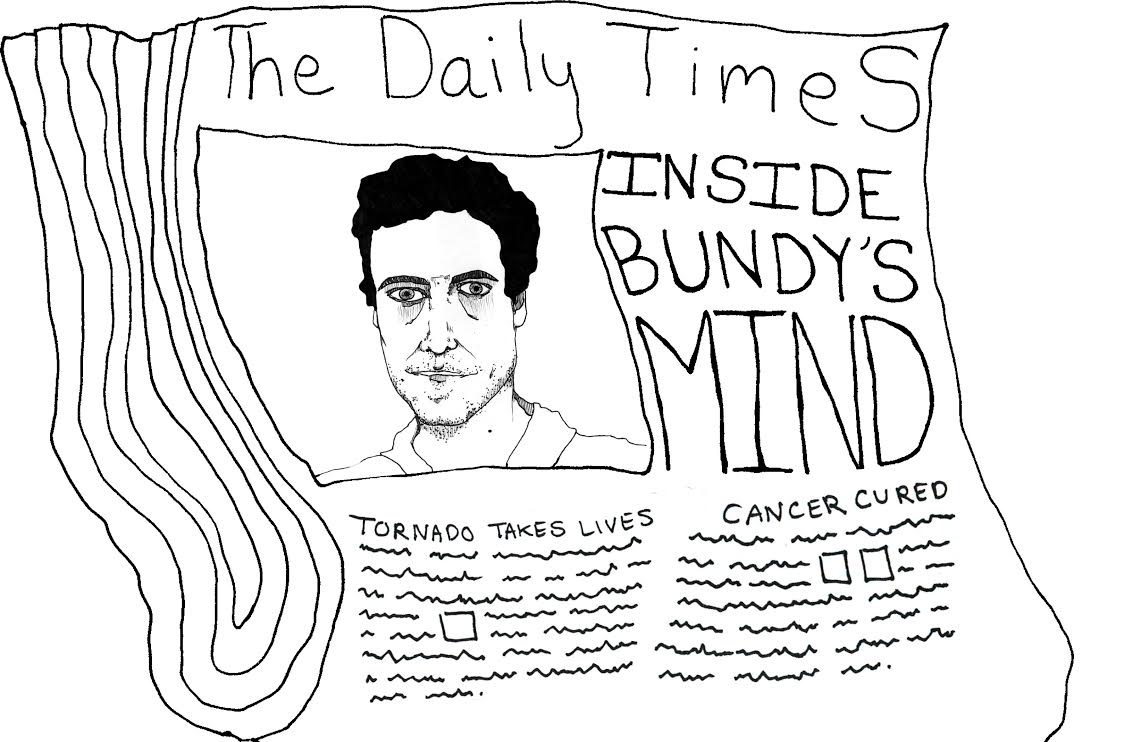A MURDERED SERIAL: Popular culture’s fascination with serial killers and mass murderers often crosses the line from interest to glorification. Cartoon by Tiger Villaveces
By TIGER VILLAVECES – Staff Writer
Popular culture’s obsession with serial killers and mass murderers is sick and inappropriate.
When most people hear names like John Wayne Gacy, Ted Bundy and Jeffrey Dahmer they feel uncomfortable. For some, these names strike interest. Although it is natural to be interested in criminals and the reasoning behind their actions, it has become an unhealthy fascination within the media.
“Although they account for no more than 1 percent of the approximately 15,000 homicides in the U.S. annually, serial killers receive a disproportionate amount of media attention due to the incomprehensible savagery of their deeds,” professor of criminology Dr. Scott Bonn writes on his website docbonn.com.
The documentary Serial Killer Culture, by John Borowski, follows the lives of various “serial killer collectors.” These are people who invest their time and money into collecting the memorabilia of serial killers. This includes things like newspaper clippings, murder weapons and even art created by the murderers. The movie brings light to this glorification of criminals.
“I agree with anybody who says it’s a morbid fascination, it is, but it’s a very human fascination,” one enthusiast said in the documentary.
Though this collector is correct about it being a human fascination, serial killer culture is an unhealthy concept that everyone needs to unlearn. Fascination and interest may be similar words, but when it comes to murderers, rapists and criminals, excessive curiosity crosses the line.
Many of the collectors in the film claim it’s artistic expression to collect serial killer memorabilia. One collector even said that he goes to garage sales posted by victims’ families to buy items owned by the victims.
One of the largest problems with the extreme interest in serial killers is the fact that these are real people being talked about. The lives that killers took were living, breathing humans. When a person decides to advocate serial killers, they are promoting the death of innocent people.
A few days after the devastating attack, I noticed that people were describing Dzokhar Tsarnaev, one of the recently convicted Boston Bombers as “cute”.
I had to hear this killer being admired in my own household while all I could think about were the screams of people bleeding in the streets of Boston.
Now that a couple of years have gone by, I’ve focused on why murders and serial killers are put on a pedestal in public. They do things that people only see in movies. Things that are only imagined but never tried. This is why people are fascinated by the idea of a serial killer.
A large example of a loved serial killer is actually a fictional one. The character Tate Langdon from Season One of FX’s American Horror Story was glorified by not only the show’s fans but the series as well.
Because the actor Even Peters is an attractive young man, users of social media sites like Tumblr, Twitter and Instagram portrayed the manipulative school shooter as a star to edit flower crowns and heart stickers on.
Similar to Peters, the Boston Bomber, Tsarnaev was given undue attention– and not just for his crime. His glamour shot on the cover of Rolling Stone not only gave him the representation and attention he was looking for, but made the situation more socially acceptable.
